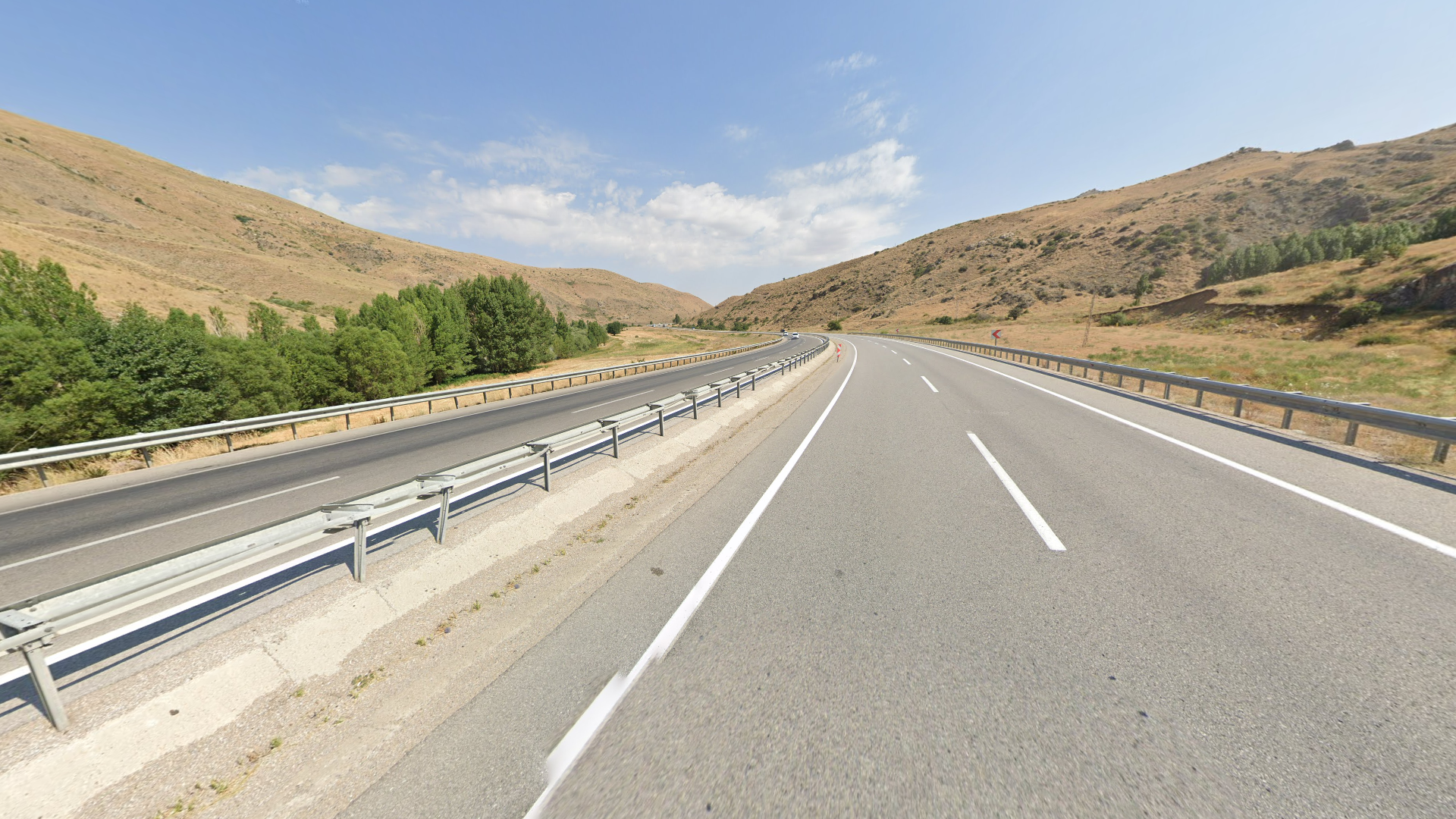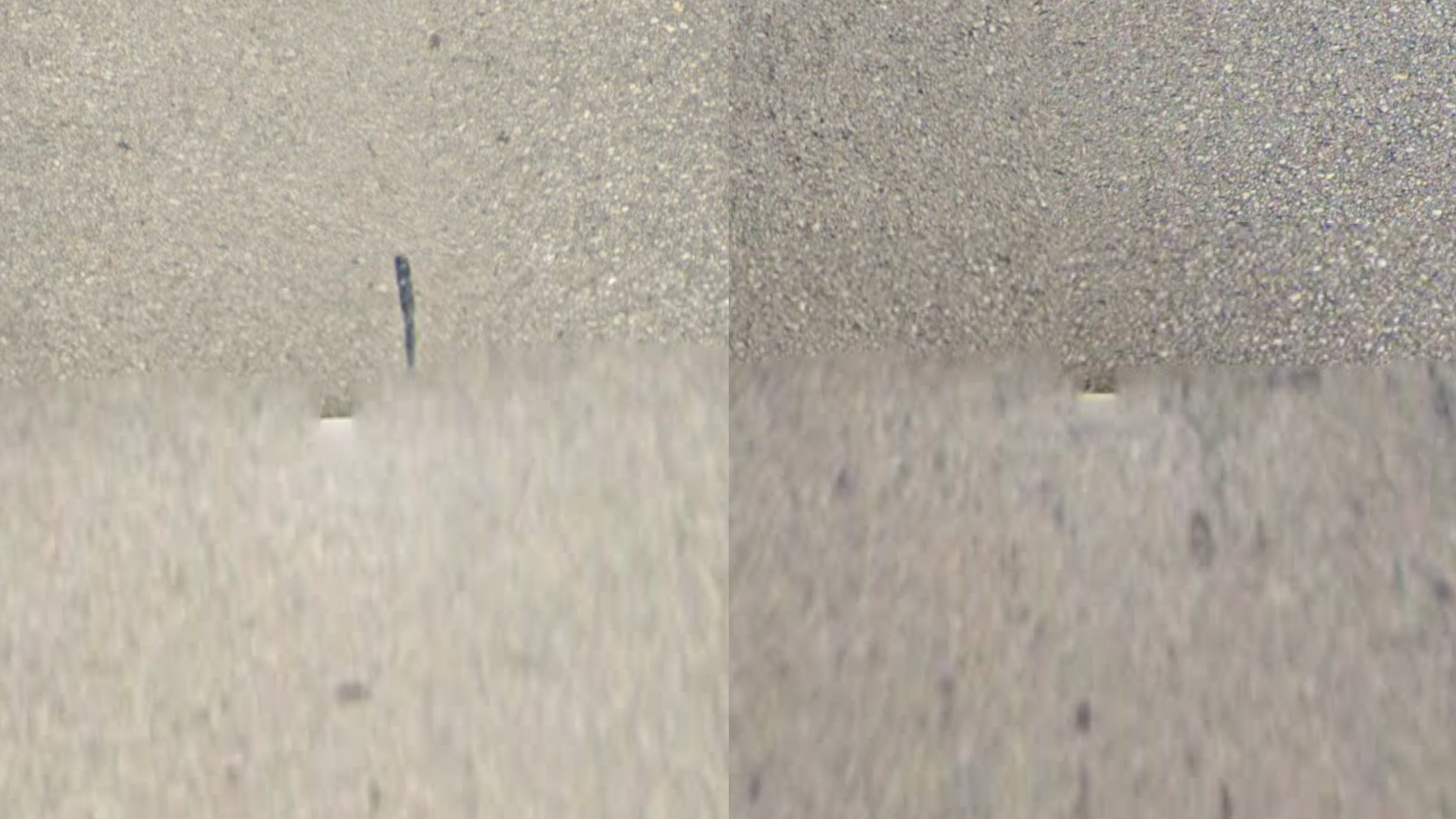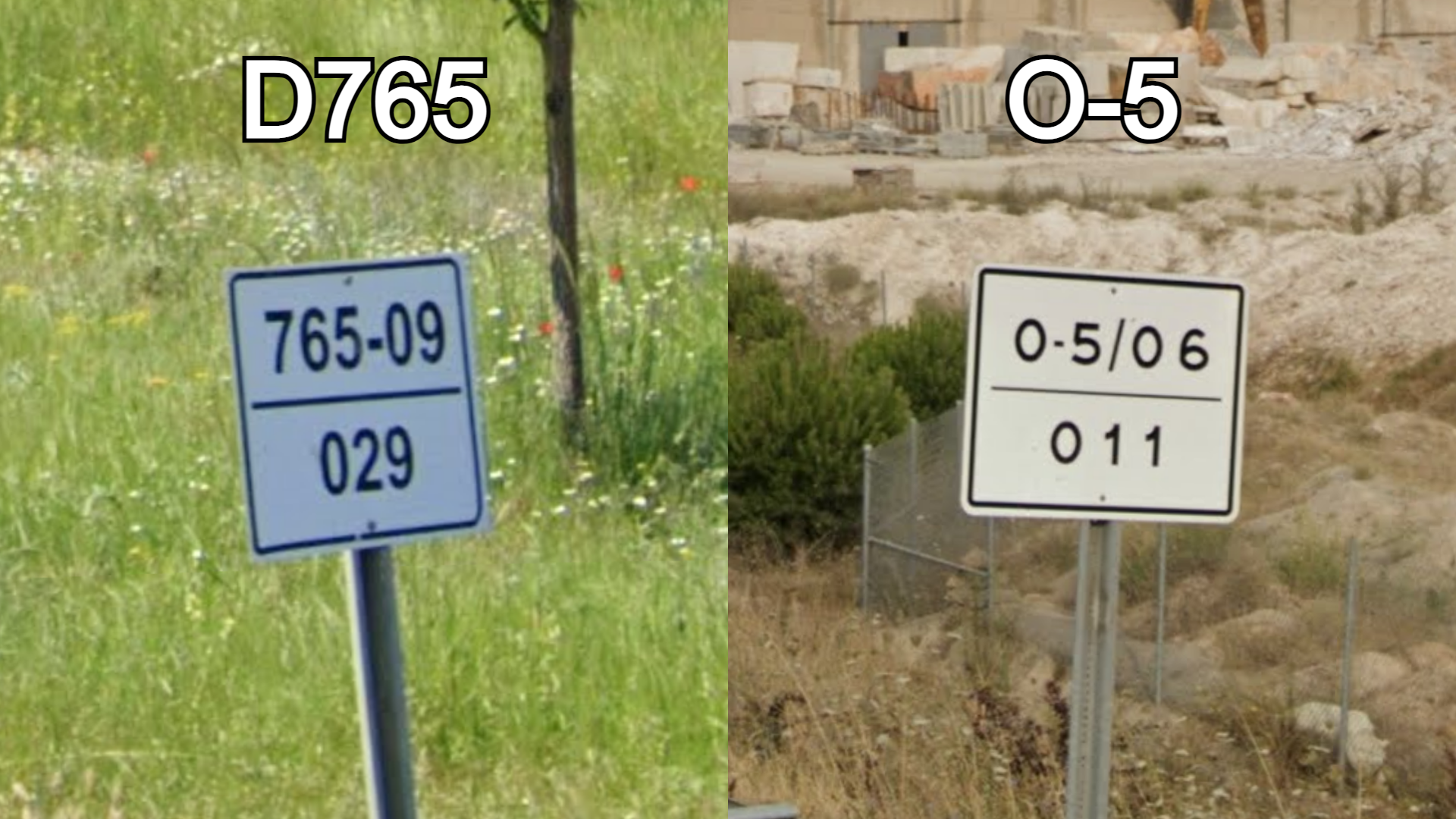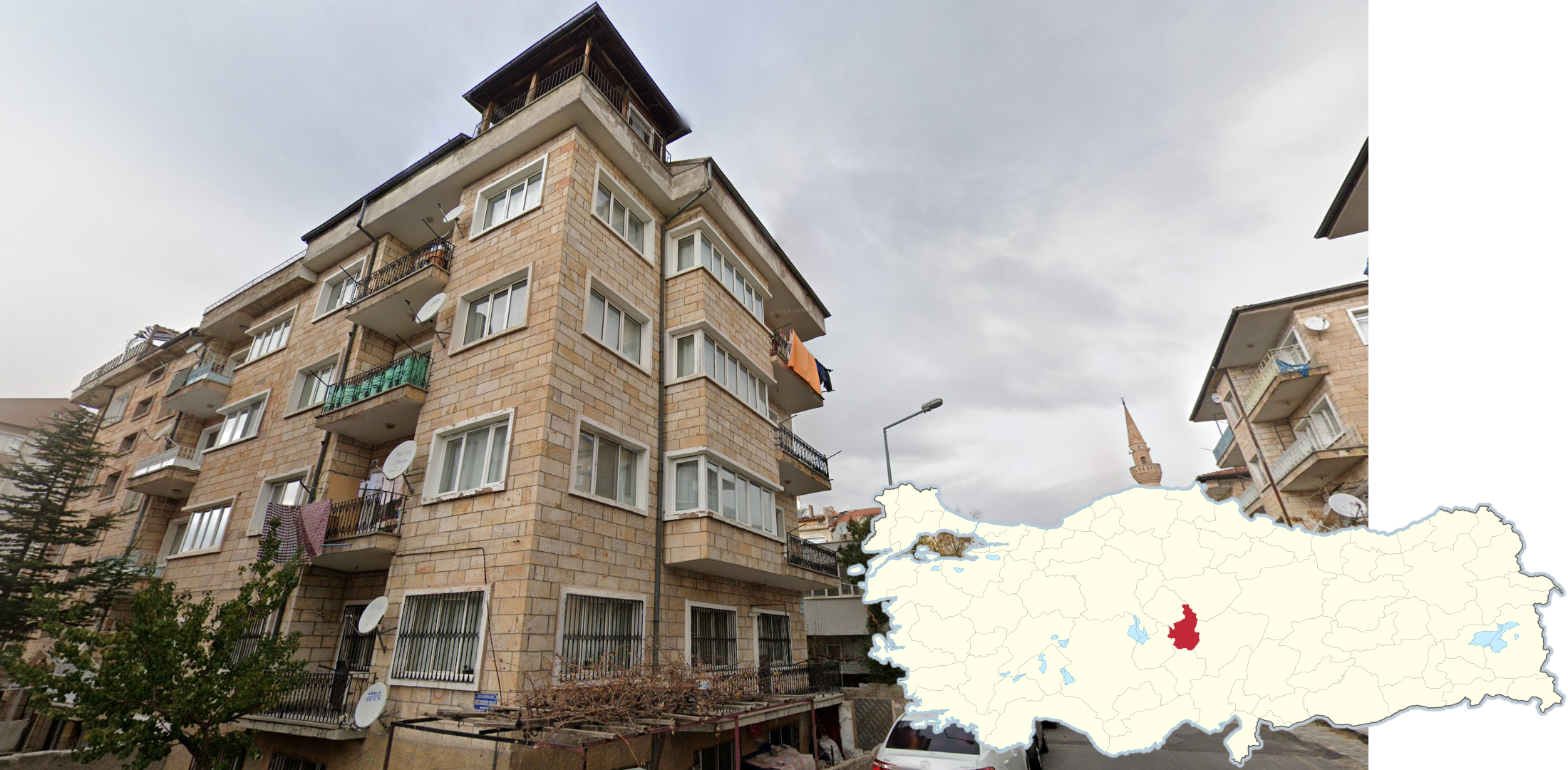
Turkey
NOTE: The official international spelling for Turkey, which is also seen on Google Maps, is Türkiye. This guide however will still use “Turkey” as it is the most commonly used spelling in less formal settings.
The Turkish language has a fairly unique look. It uses the following special characters:
Ç ç and Ş ş with a cedilla (“hook” below the letter).
Ö ö and Ü ü with an umlaut (two dots).
Ğ ğ with a breve.
Dotless I ı. This letter in particular is noteworthy, as it is essentially unique to Turkish. In case you are confused: this is similar to the letter i, but without a dot when written in lowercase.
Capital İ with a dot.
The colour of Turkish road lines is somewhat inconsistent. Most roads simply have white road lines. However, it is not uncommon to see yellow road lines. These roads can have fully yellow lines, or a combination of yellow and white lines.
Turkish chevrons are typically red on white. Beware that there are some other regional variants.
Usually, the tip of the arrow does not touch the edge of the chevron. Some chevrons have a neon yellow border.
Sometimes, you can see these narrow chevrons that have a red and white colour scheme.
NOTE: Almost identical chevrons can be found in South Africa.
Turkey uses both main types of guardrails:
A-type guardrails, which have rounded edges.
B-type guardrails, which have square edges.
While most Mediterranean countries use the A-type, B-type can help solve some tough 50-50s. Furthermore, seeing both types will exclude all southern European and Middle Eastern countries, other than Montenegro and Israel & the West Bank. For a full overview of which guardrails are found in which European country, see this infographic.
The Generation 4 coverage in Turkey typically features a white Google car. Usually, only a tiny sliver of the back of the car is visible. The car can have a short antenna, or no antenna at all.
The Turkish landscape ranges from arid in the southeast to a Mediterranean landscape in the southwest. In the north you will often find a more forested and lush landscape. The most typical landscape is semi-arid, either rolling or flat, with vast agricultural fields, containing very limited vegetation other than crops.
Beware that Turkey is a very naturally diverse country with many landscapes that are not mentioned in this tip.
Turkey is a muslim country, and as such mosques can be found in most towns. In particular, tall minarets are extremely common and a good clue for the country.
Turkey has three main types of numbered roads. The largest type are the O-roads, which on kilometre markers feature an O followed by a hyphen and the road number. The second largest type are the D-roads, which omit the “D” on kilometre markers and instead only feature a 3-digit road number, followed by the road section number on the top and the kilometre at the bottom. The section number will generally increase to the southeast.
The third type of roads are provincial roads. While these generally aren’t labelled on the map, they can still be used to regionguess since the kilometre markers feature the provincial code as the first two digits on the sign. These codes generally increase alphabetically from 01 to 76 with some newer regions being unordered. Shown in the image is a road from the Afyon Province (03).
In the northeast you will find uncultivated grasslands in valleys surrounded by round hills. Trees are very limited in the region. In Generation 3 the area has an extremely distinct look, with deep green grass covering the hills. It is significantly more difficult to recognise in Generation 4, where the grass has a more arid look.
Turkish pines (pinus brutia) are mainly found near the Mediterranean coast.
NOTE: Turkish pines can appear very similar to Aleppo pines, which are uncommon in Turkey, but are often found in other Mediterranean countries.
Lake Van is by far the biggest lake in Turkey and has a semi-arid landscape, being surrounded by dry grassy hills and occasional trees and agricultural fields near the shore.
River valleys surrounded by steep, barren and rocky cliff sides can be found between the cities of Erzurum and Artvin and in the southeast near the city of Hakkâri.
Yellow on black chevrons are mainly found in and around the Balıkesir Province in the west and in the Kars Province in the far east. Beware that you may very rarely find them elsewhere.
Four-lane divided highways with no divider, other than double middle road lines, are almost exclusively found in the eastern half of the country.
Beware that divided highways with clear dividers, such as guardrails, can still be found in the east.
Street signs in the Ankara Province are blue with a small round top. Similar street signs can very rarely be found in Giresun.
Beware that some newer street signs are red.
Around the city of Bodrum you will commonly find this type of whitewashed buildings with flat roofs, often combined with blue details or unpainted stone walls.
Mount Ararat, labelled as Ağrı Dağı on Google Maps, is a dormant volcano in far eastern Turkey and the tallest mountain in the country. It is often seen together with Küçük Ağrı, a smaller volcano to the southeast.
Along the western shore of Lake Beyşehir and Lake Eğirdir you can find this small single lane road with jagged, exposed rock and Turkish pines to the west. These two can be differentiated by the road west of Lake Eğirdir having a middle road line.
Red street signs with a coloured bottom strip are found in several cities. In the bottom right corner, you can find a white arrow and some numbers. If this arrow is pointing in both directions and has a single arrowhead, rather than double, then you are almost certainly in Istanbul.
Beware that simple arrows pointing in only one direction can be found in both Istanbul and in other cities. However, if you see such signs in combination with red house numbers, then you should be in Istanbul.
Street signs in Trabzon and Yalvaç are red and oval-shaped. House numbers also feature the same design.
Street signs in Bursa are green, and generally have slightly extruded letters, meaning the signs are not completely flat.
NOTE: Several other types of infrastructure in Bursa, such as fences and guardrails, may also be coloured green.
GeoGuessr’s own official maps are not very good, for a variety of reasons. Plonk It recommends the following maps instead:
In addition, here are some resources to help you practise Turkey:
Plonk It Turkey (map link) - This map contains locations for practising each meta in the Plonk It Turkey guide from step 2 to 3.
































































